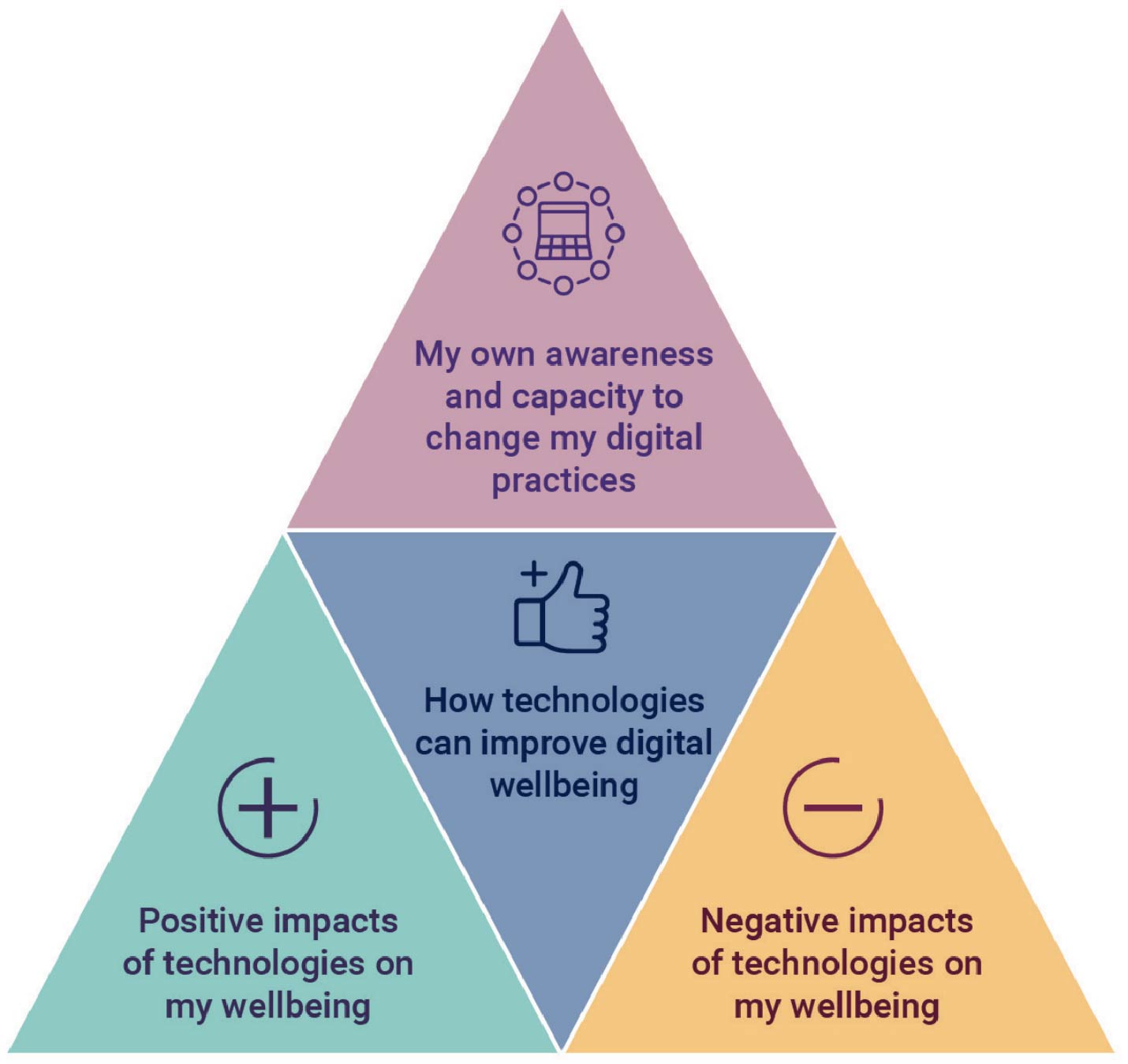Your digital wellbeing
What is digital wellbeing?

"Digital wellbeing considers the impact of technologies and digital services on people’s mental, physical and emotional health" (Jisc, 2019).
As digital technologies permeate our everyday lives it has become increasingly important that we consider what impact this is having on our wellbeing. What effect have digital communications, online networks and wearable technologies had on our sense of self and our relationships with others? Such questions have led to a relatively new area of research on ‘digital wellbeing’.
Speakers on Google’s Digital Wellbeing course define Digital Wellbeing as: "Digital Wellbeing is about crafting and maintaining a healthy relationship with technology. It’s about how technology serves us and moves us towards our goals, rather than distracting us, interrupting us or getting in the way. Being in control of technology enables us to use its full potential and gain all the benefits of it.”
Frequent use of technology and social media isn’t a problem in itself. There are many good aspects to technology. However sometimes the way in which we use it can have a negative impact upon us – especially if we don’t have good control over our habits.
Pros and cons of living with tech
There are a number of positives and negative aspects of working and living with technology. The lists below capture many of these. How many do you associate with?
Positives
- Learning
- Keeping in touch
- Skills for employment
- Flexible working
- Professional identity
- Networking
- Convenience (shopping, banking etc)
- Tracking
- Fun / hobbies (music, gaming, photos)
- Inclusion
- Learning and development
Negatives
- Cyberbullying
- Overload
- Doomscrolling
- Creating comparisons with others
- Online fatigue
- Physical health (eye strain, ergonomics)
- Technoference
- Addictive behaviours
- Sleep disturbance
- Echo chambers and filter bubbles
For you, do the positives outweigh the negative of working and living with tech? According to Ofcom 65% of adults say that they do. If not, then it may be time to make some changes to your digital practices.
Digital Wellbeing Capabilities
- Effectively manage digital workloads
- Managing distractions
- Participate safely in digital spaces
- Being aware of the positives and negatives of tech on wellbeing
- Use digital tools positively
- Positive emotions about online interactions
Tips for improving digital wellbeing
- Create device free times or zones in your homes
- Put your devices to good use and download a wellbeing app
- Create some boundaries for yourself
- Limit yourself to one screen at a time
- Minimise and manage distractions
- Spring clean your social media accounts
- Try a digital detox
Reading and Resources
How to combat zoom fatigue, HBR
How to tell if your digital addiction is ruining your life, The Conversation
Android links to control apps and notifications
Decade of digital dependency, Ofcom
University Wellbeing Resources
Tools and tips from Google to help you with your digital wellbeing, Google Digital Garage
A guide from google about talking to your family about digital wellbeing, Google
Take a free course on digital wellbeing via FutureLearn
Attend a staff Digital Wellbeing workshop
Jisc 'Digital wellbeing briefing papers for practitioners and senior leaders'
Wellbeing Champions
The University of Manchester have a network of Staff Wellbeing Champions across the University. They help help signpost staff to the University wellbeing services, national health and wellbeing days, University wellbeing events and arrange locally based wellbeing events to engage and support staff. They also feedback to the Staff Wellbeing Champions Network so that future initiatives can be developed for the University. If you would like to find out more information, please visit the link below.
